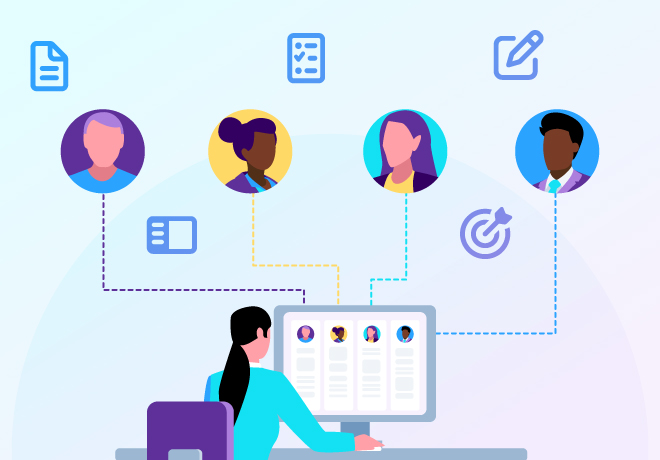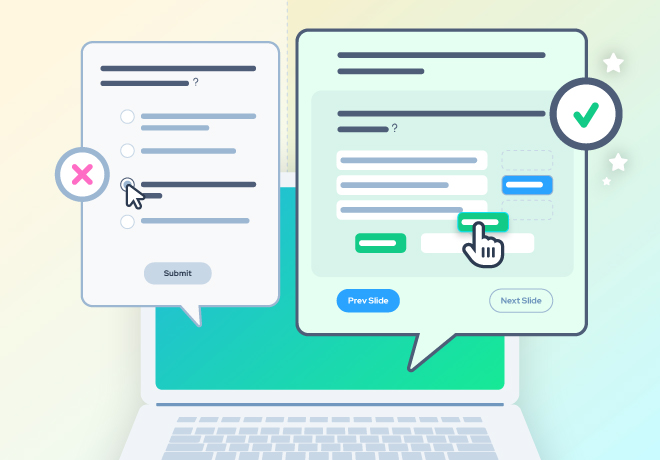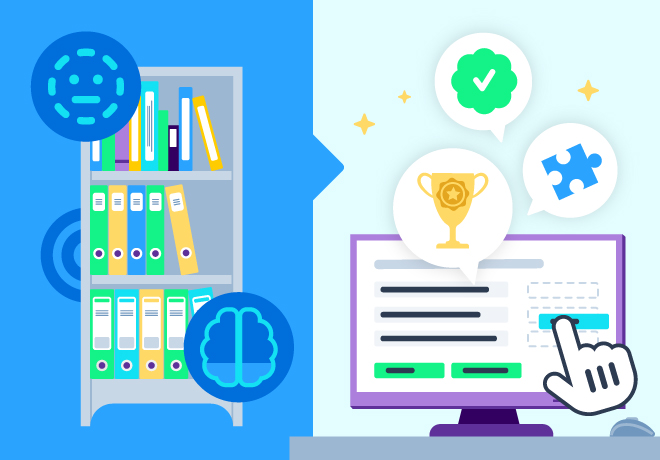
What is learner experience?

Related articles
Get valuable eLearning insights to your inbox.
Listen to Neovation’s Demystifying eLearning podcast generated with NotebookLM!
Listen to our podcast on your favorite platform!
A learning experience consists of far more than a learner progressing through and completing a set curriculum or training course.
Relevant content is an essential element of a learning experience, of course, but learner experience encompasses far more than that.
Looking at learner experience, rather than focusing solely on content, centers the process on the learner. Each learner enters a learning or training experience with a different combination of prior knowledge, interest in and need for the content, ability, and openness to learning.
Each learner brings that background to their encounter with content, the user interface, the learning environment, and, potentially, interactions with classmates or colleagues and an instructor. The learner experience, or LX, combines all of those elements to characterize the learner’s engagement with the training, progress through the material, mastery of content and, ultimately, retention of the content.
A sub-field of instructional and eLearning design is learning experience design — the creation of learning experiences that are engaging and meaningful and that enable learners to achieve their learning goals and meet learning objectives.
Learning is a journey

The learner’s journey begins when the learner or their manager becomes aware of a need — there’s a gap in their knowledge or their performance is off or they need to learn a new skill or master a new tool or technology.
The journey continues when the learner or manager identifies a learning solution — an eLearning course, microlearning app, instructor-led in-person or virtual class or workshop — or another resource that will help fill that knowledge gap.
The learner’s experience of consuming that resource and interacting with experts, instructors, and fellow learners, as well as internally processing the material, is part of the LX. But the LX continues after formal completion of the training material — it also figures into the learner’s ability to use and apply newly learned skills or information.
Content is only one piece of LX
In keeping with the learner focus, a positive LX is deeper and broader than content alone. The content must be relevant and have purpose or value to the learner. And, ideally, the content is adaptive. That means that each learner is exposed to the content that is most relevant to them and most likely to advance them toward their goals. This is a stark contrast to learning curricula that deliver identical content to all learners, regardless of their prior knowledge or experience — or their needs and individual context.
For this reason, a great LX begins with the medium or media in which content is delivered and how learners consume it. Creating dynamic video stories for learners who spend their days on a busy retail floor or driving a semitrailer is unlikely to create a great LX; they have to interrupt their work to find a place where they can safely watch it. Making content available on demand and on learners’ preferred mobile devices, while offering a choice of media formats is conducive to a positive LX.
Beyond content and delivery, LX involves the look and feel of a learning program and how the learner interacts with it. In this respect, LX design intersects with user interface design and visual design. A flashy, expensively designed graphical interface that has learners wondering how to navigate to the next screen or has them scrolling endlessly through text on their smartphones won’t win any LX kudos. Instead, consider the learners’ comfort with technology, and design a simple interface and navigation paradigm that will feel familiar and intuitive. Use graphical elements and interactivities that enhance the content and deepen learning, rather than decorative graphics.
Don’t overload learners

A positive learner experience engages the learner with relevant content in a way that the learner finds useful, appealing, and easy to use.
It does not overload the learner by marching them through too much information or forcing them to figure out how to find the next section. It doesn’t demand that they schedule a large block of time or struggle to find a time and place to train.
A great LX delivers content in small, digestible chunks and offers repeated exposure through spaced repetition. This enhances the effectiveness of the training while maintaining engagement with varied content and activities.
Above all, a great learner experience answers a question or meets a need — and allows learners to immediately use what they’ve learned on the job.
A great learner experience effectively solves the learner’s immediate needs — and motivates them to want to continue learning and improving.

An experienced writer, editor, tech writer, and blogger, Pam helps you make sense of learning science and eLearning technology. She provides information you can use to drive improvements in your training effectiveness and ROI.
Become part of our L&D community
We publish a new learning hub article — full of useful, practical topics — weekly.
Not sure where where you want to start? Jump into one of our recently published articles and see where it takes you!








-svg.svg)
-svg.svg)
-svg.svg)
-svg.svg)